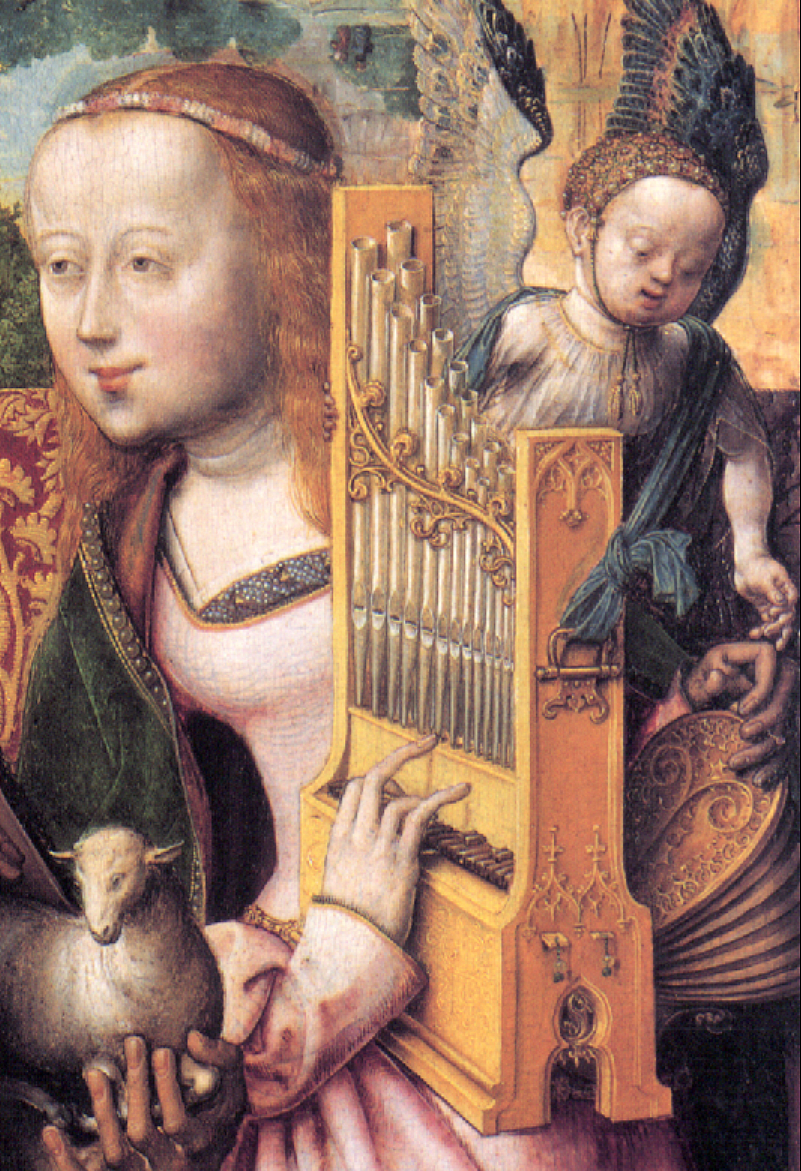The American composer Carson Cooman (b. 1982) is active as a concert organist specializing in contemporary music. He has written numerous works for organ, but his compositions also include opera, orchestral works, and works for other solo instruments. Cooman has held the position of Composer in Residence at The Memorial Church at Harvard University and at the Cathedral Church of St. Paul in Boston.

This rondeau is from Cooman’s Tres Novas Cantigas (Three New Songs) written expressly for the performer, Chilean-born Catalina Vicens, who specializes in medieval and Renaissance music and early keyboard instruments. So it’s not surprising that this work combines various medieval and contemporary styles.
Medieval elements include the drone against a modal melody and a consistent rhythmic pattern or rhythmic mode. The middle section has a freer, improvisatory character with changes in tonal color and even some vibrato.
The rondeau comes from medieval France and the popular songs of courtly love that flourished after the Crusades. The form generally involves an alternation between a main section with contrasting episodes in between.
The history of the pipe organ goes back to the Ancient Greek hydraulis, which used the weight of water to force air through its pipes. The organ was gradually incorporated into churches beginning around 1100 and became a rather standard fixture by the 15th century. Medieval organs were generally classified as positiv or portativ. Positive organs were large instruments fixed in place while the portative organs were portable. As seen in the video, the portative organ generally had a single rank of pipes arranged in two rows and a keyboard of one or two octaves. The player operated hand bellows with one hand and the keyboard with the other.



